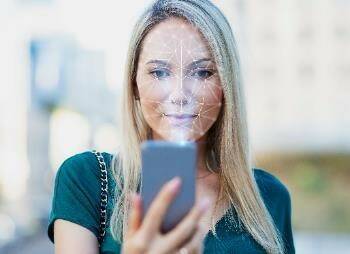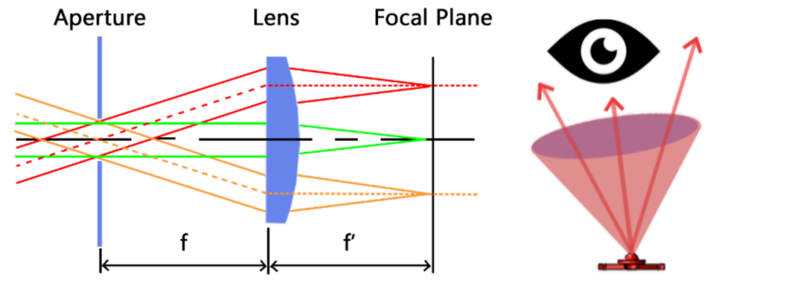Ensuring the Accuracy of Facial Recognition Systems
Biometric security measures—including fingerprint ID, iris and & retinal scanning, and voice recognition—are gaining popularity across the world due to increasing cybersecurity and privacy threats, accompanied by advancements in technology that make these identification methods possible.
Facial recognition is one of these growing biometric authentication methods. The basis of facial recognition technology is near-infrared (NIR) light, which is used to project an invisible pattern onto a person’s face. An infrared camera then reads the reflection of this light and calculates any deformations in the pattern to create a 3D map, which is then used to verify the user’s identity.

Conceptual representation of NIR facial recognition, where a device (in this case a smart phone) casts a pattern of (invisible) dots on the user's face for 3D facial mapping.
While helping to increase device security, NIR light also comes with its own safety concerns. NIR emissions must have sufficient intensity to be read accurately by the device for effective user identification, yet they must also be limited in intensity to prevent harm to a user when exposed to the face or eyes, especially over time.
Radiant Vision Systems has developed a solution to measure near-IR light emissions: the Near-Infrared (NIR) Intensity Lens. This February, the editors at New Equipment Digest interviewed Jens Jensen, Director of Product Development at Radiant, to learn how this measurement lens can ensure the accuracy and performance of NIR light sources with minimal time and cost to NIR device manufacturers.
In the interview, Jensen explains how Radiant’s NIR Intensity Lens solution uses Fourier optics to transform angular emissions of light and capture them on an image sensor, creating a 2D image of the 3D light output. This design captures the complete light distribution of the NIR source in a single image, enabling analysis of intensity irregularities across the distribution, and ensuring that there are no abnormally high- or low-intensity emission points.

Radiant’s NIR Intensity Lens uses Fourier optics and is calibrated to a connected imaging radiometer. These optics transform a directional distribution of light rays emanating from a single point (creating a cone) to a lateral distribution (all light rays parallel) read by a sensor. In this way, it can capture the entire 3D distribution of angular light rays on a single 2D focal plane (image sensor in a camera)
The NIR Intensity Lens solution integrates lens, camera hardware (our ProMetric® Y16 Imaging Radiometer), and specialized software to analyze the radiant intensity and uniformity of NIR emissions, including structured light dot patterns (created by diffractive optical elements, or DOE), flood source emitters (typically used by the device for time-of-flight measurement), and more. Read the interview with Jens Jensen to learn about the challenges of measuring NIR emitters for facial recognition, the development of the NIR Intensity Lens, and more about the optical principles behind this solution.

Join Mailing List
Stay up to date on our latest products, blog content, and events.
Join our Mailing List
